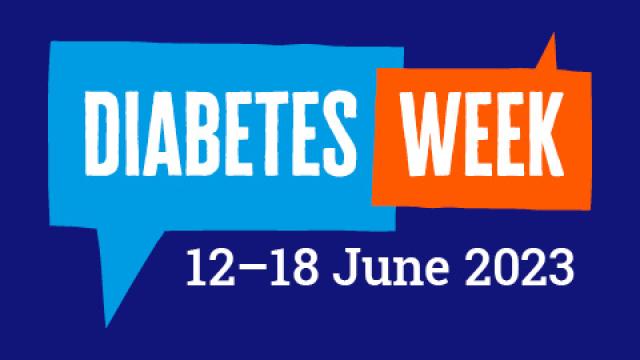Continuing our work on diabetes in 2023
This year, Diabetes Week takes place from the 12th to 18th of June. Diabetes is a serious condition where your glucose levels are too high. It can happen when your body doesn’t produce enough insulin or the insulin it produces isn’t effective. In some cases, your body may not be able to produce any insulin at all.

There are multiple types of diabetes. What all types of diabetes have in common is that they cause people to have too much glucose (sugar) in their blood. We all need glucose in moderation, as it gives us energy. We get glucose when our bodies break down our food and drink, releasing glucose into our blood.
We also need a hormone called insulin which is made in our pancreas. Insulin allows the right amount of glucose to enter our bloodstream, which fuels our bodies and gives us energy. However, if you have diabetes, this system doesn’t work.
Symptoms of Diabetes
The common symptoms of diabetes include:
- Going to the toilet a lot, especially at night.
- Being constantly thirsty.
- Feeling more tired than usual.
- Losing weight without trying to.
- Genital itching or thrush.
- Cuts and wounds take longer to heal.
- Blurred vision.
Diabetes and Pancreatic Cancer
Insulin resistance and raised blood sugar levels in type 2 diabetes cause inflammation which damages the pancreas. In the long term, this may increase the risk of pancreatic cancer. The relationship between pancreatic cancer and diabetes is complex as type 2 acts as a cause for and response to pancreatic cancer.
What are we doing?
After years of campaigning, funding research and lobbying, Pancreatic Cancer Action has recently achieved a significant change to NICE guidance that has the potential to save up to 3,000 lives a year.
NICE Guidance (NG17), covering managing and diagnosing diabetes in adults, was updated to include advice to help identify pancreatic cancer. This guidance reads:
For people aged 60 and over presenting with weight loss and new-onset diabetes, follow recommendations on assessing for pancreatic cancer in the section on pancreatic cancer in the NICE guideline on suspected cancer: recognition and referral. [2022]
This change means that patients should be referred for an urgent direct access CT scan (done within two weeks) or an urgent ultrasound scan if CT is not available to assess for pancreatic cancer in people aged 60+ with weight loss and new-onset diabetes.
Research shows that new-onset diabetes has been identified to occur in up to 30% of pancreatic cancer patients and can be detected in the pre-symptomatic phase. In some cases, this can be up to two years before the cancer is discovered. Type 2 diabetes is a symptom of pancreatic cancer, especially for those with a low or reducing BMI.
Pancreatic cancer is the deadliest of all the common cancers. In England, only 25% of pancreatic cancer patients survive one year after diagnosis, and only 7.3% survive five years after diagnosis. Only around 10% can have surgery to remove pancreatic cancer due to its late diagnosis. This change in guidance will result in potentially thousands more being diagnosed in time for life-saving surgery.